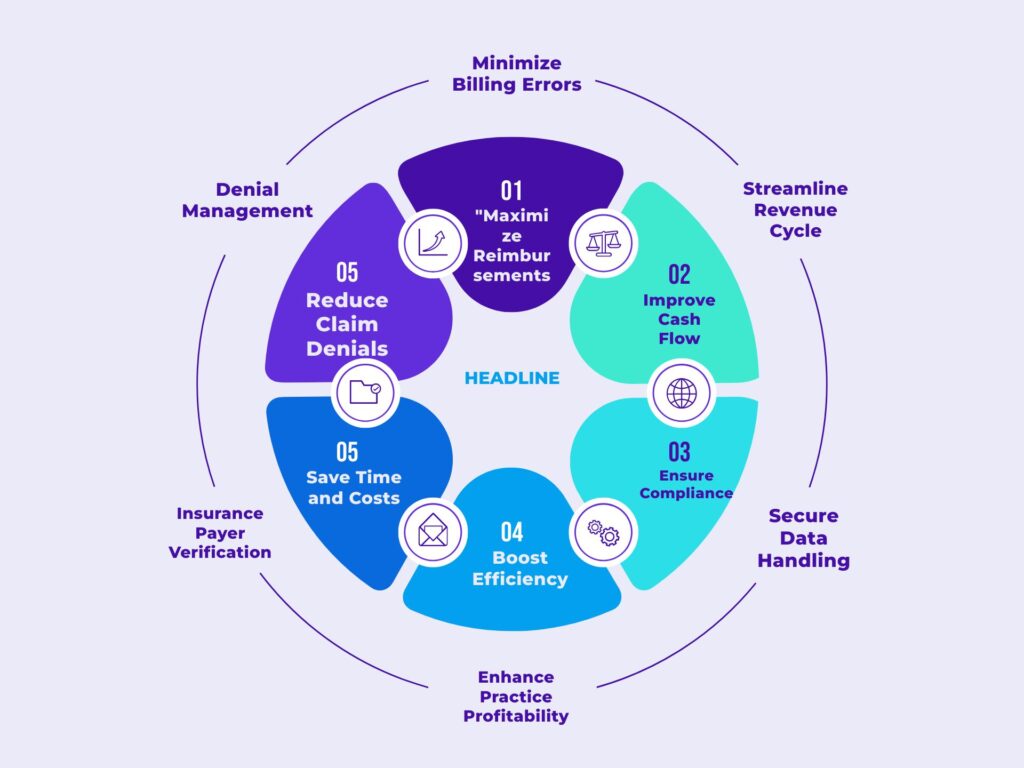Overview of Billing Clinic Pediatrics
Billing Clinic Pediatrics refers to the specialized billing processes involved in pediatric healthcare services. Accurate and timely billing is essential for ensuring that pediatric clinics receive appropriate reimbursement for the services they provide. This process bridges the gap between insurance providers and pediatric healthcare services, enabling seamless financial transactions, reducing errors, and maintaining operational efficiency. By prioritizing accurate billing processes, pediatric clinics can sustain a steady cash flow and focus on delivering quality care to their young patients.
The Significance of Billing Clinic Pediatrics
It is a vital aspect of revenue cycle management (RCM) for pediatric healthcare providers. It encompasses all financial transactions related to pediatric patient care, including insurance payments, claim adjustments, denials, and patient financial responsibilities. Efficient billing ensures financial stability for pediatric clinics while supporting a transparent and patient-friendly approach to healthcare management.
Benefits of Billing Clinic Pediatrics
Effective billing processes in pediatric clinics offer numerous advantages that directly influence the clinic’s financial health, operational productivity, and patient satisfaction. Let’s explore these benefits in detail:
1. Improved Financial Accuracy
Accurate billing in pediatric clinics ensures financial precision by minimizing errors in patient accounts, revenue reporting, and forecasting. Proper documentation of insurance payments, adjustments, and denials reduces discrepancies, preventing revenue leakage. This allows clinics to maintain a robust financial foundation and focus on delivering care without disruptions caused by billing errors.

2. Real-Time Error Detection
Billing Clinic facilitates the early identification of errors such as incorrect payment amounts, missing documentation, or misinterpreted denials by insurance providers. Early error detection allows clinics to address discrepancies swiftly, avoiding delays in revenue collection and ensuring a smooth billing process for patients and insurance payers.
3. Enhanced Patient Experience
Accurate billing practices contribute to a better experience for families and patients in pediatric clinics. Clear and transparent billing statements allow parents to understand their financial obligations, including what is covered by insurance and what remains as out-of-pocket expenses. This transparency reduces confusion and fosters trust, ensuring a positive relationship between the clinic and its patients.
4. Streamlined Revenue Cycle Management (RCM)
Billing Clinic Pediatrics plays a central role in optimizing revenue cycle management. Efficient billing ensures that payments are tracked accurately across the system, claims are processed promptly, and denials are resolved quickly. By addressing potential issues early in the billing cycle, pediatric clinics can improve cash flow, reduce revenue losses, and enhance overall operational efficiency.
5. Data-Driven Insights
Data collected during the billing process provides valuable insights into payer trends, claim denials, and overall revenue cycle performance. By analyzing this information, pediatric clinics can make strategic decisions to improve billing workflows, negotiate better terms with payers, and enhance financial management practices.
How does Billing Clinic Pediatrics impact revenue cycle management?
Essential Steps
Billing Clinic Pediatrics involves a series of critical steps to ensure smooth financial transactions and efficient revenue management. Each step contributes to maintaining accuracy, transparency, and operational efficiency.
1. Payment Collection
Payments from insurance providers or patients are collected through various methods, including electronic funds transfers (EFTs) or checks. These payments are then matched against submitted claims to ensure accuracy.
2. Data Entry
Payment details, such as payer information, payment date, and amount, are entered into the clinic’s billing system. Accurate data entry at this stage reduces errors and ensures consistency throughout the billing process.
3. Payment Reconciliation
Reconciliation ensures that the payments received align with the claims submitted. Discrepancies, such as partial payments or denied claims, are flagged for further investigation.
4. Adjustments and Denials
Insurance adjustments are applied to account for contractual obligations or policy exclusions. Denials are categorized and reviewed for possible resubmission or appeal.
5. Updating Patient Balances
Patient accounts are updated to reflect the remaining balances after insurance payments and adjustments. Families are then notified of their financial responsibilities to maintain transparency.
6. Reporting
Detailed reports are generated to provide insights into payment trends, payer performance, and revenue cycle efficiency. These reports help clinics make data-driven decisions to improve their billing practices.

Challenges in Billing Clinic Pediatrics
While Billing Clinic Pediatrics is essential, it comes with its own set of challenges. Recognizing and addressing these issues is key to maintaining an effective billing process.
1. Inaccurate Payment Posting
Errors in payment posting can lead to incorrect patient billing and financial inconsistencies. Proper staff training and robust billing systems are essential to minimize these errors.
2. Complex Insurance Adjustments
Reviewing insurance remittance advice (ERA) or explanations of benefits (EOBs) can be labor-intensive and prone to errors. Automation tools can simplify these tasks and reduce the likelihood of mistakes.
3. Delayed Updates
Delays in updating patient accounts can disrupt the billing cycle and lead to delayed collections. Real-time updates are critical to maintaining efficient workflows.
4. Denial Management
Denial rates can increase due to inaccurate postings or incomplete claims. Effective denial management practices, such as timely appeals and resubmissions, are vital for reducing revenue loss.
Best Practices
Implementing best practices ensures that pediatric clinics can optimize their billing processes and achieve financial stability.
- Automate Processes: Utilize advanced billing software to reduce manual errors, enhance efficiency, and save time.
- Ongoing Training: Train staff regularly on updated billing codes, payer policies, and technology to maintain accuracy.
- Regular Audits: Conduct audits to identify discrepancies and areas for improvement.
- Streamline Denial Management: Develop clear protocols for handling denied claims to minimize delays in reimbursement.
- Maintain Clear Communication: Ensure transparent communication with insurance providers and families to resolve issues promptly.
How does accurate billing improve patient satisfaction?
Technology in Billing Clinic Pediatrics
Technology has transformed billing processes for pediatric clinics, making them more efficient and accurate.
Key Technological Tools
- Electronic Remittance Advice (ERA): Streamlines the posting of payments and adjustments.
- Billing Software: Automates recurring tasks and ensures precision.
- Artificial Intelligence (AI): Identifies payment anomalies and optimizes workflows.
- Cloud-Based Solutions: Provides secure, real-time access to billing data from any location.
Conclusion
Billing Clinic Pediatrics is a cornerstone of effective revenue cycle management for pediatric healthcare providers. By prioritizing accurate billing practices, leveraging technology, and following best practices, pediatric clinics can ensure financial stability, enhance patient satisfaction, and streamline operational efficiency.
Efficient billing processes allow pediatric clinics to focus on their primary goal: providing exceptional care to young patients and supporting their families. Through continuous improvement and the adoption of innovative tools, clinics can stay competitive while maintaining strong relationships with payers and patients alike.
FAQs
Billing Clinic Pediatrics aims to improve patient satisfaction.
Families receive transparent billing statements that detail insurance coverage, any necessary adjustments, and the amounts still owed. Transparent communication decreases confusion, builds trust, and facilitates a more harmonious patient-provider connection.
Pediatric clinics encounter various difficulties in the billing process. What challenges do pediatric clinics face in billing?
Challenges frequently encountered include incorrect payment postings, dealing with intricate insurance adjustments, tardiness in updating patient account information, and efficiently managing claim rejections.
What ways can technology enhance the Billing Clinic Pediatrics? How can technology improve Billing Clinic Pediatrics?
Sophisticated billing systems, encompassing Electronic Remittance Advice (ERA), billing software, and artificial intelligence (AI), automate tasks, minimise human mistakes, and increase operational productivity. Cloud-based solutions provide real-time access to billing information.

